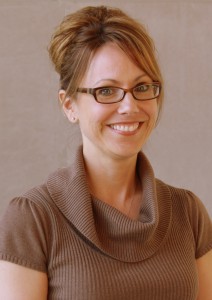
With May being Skin Cancer Awareness Month and in tandem with our event Wednesday co-hosted with the Congressional Families Cancer Prevention Program, The Hazards and Allure of Indoor Tanning Beds on College Campuses we are running a series on skin cancer. Be sure to check back daily for posts on skin cancer including how you prevent and detect it. Enjoy!
In 2009, upon review of the science on tanning beds and cancer, the International Agency for Research on Cancer assigned tanning beds a class 1 carcinogen, joining tobacco and asbestos in the highest classification of harm. In spite of this development, skin cancer rates have steadily climbed over the last 3 decades. Rising prevalence is seen especially in young women, with an 8-fold increase since 1970. Melanoma, the deadly form of skin cancer is now the most common cancer in young adults aged 25-29. Skin cancer is hitting young women especially hard because they are the heaviest users of tanning beds. Recent statistics reveal that 19{c754d8f4a6af077a182a96e5a5e47e38ce50ff83c235579d09299c097124e52d} of teens and over half of university students have used tanning beds. The risk of indoor tanning to population health has even exceeded that of tobacco. One study reported that the number of cases of skin cancer attributable to indoor tanning (~450,000) now exceeds the number of cases of lung cancer attributable to smoking (~360,000). This epidemic comes with a price tag, with annual costs for skin cancer treatment in the US now exceeding $8 billion a year and increasing at a rate 5 times faster than other cancers.
It remains unclear if the public appreciates the risks associated with tanning, perhaps due to the ubiquity of tanning salons, weak legislative action (i.e., minors are permitted to use tanning salons in most states), and the presence of tanning salons in places associated with health, such as large commercial gym chains (see here and here). Further reinforcing the perception that tanning is not harmful is the presence of tanning beds in and around college campuses. Not only are tanning salons heavily concentrated near schools, recent research has shown that 14–18{c754d8f4a6af077a182a96e5a5e47e38ce50ff83c235579d09299c097124e52d} of US universities/colleges actually allow students to pay for tanning bed use with their campus debit cards and 12{c754d8f4a6af077a182a96e5a5e47e38ce50ff83c235579d09299c097124e52d} of universities have tanning beds/salons on campus. Perhaps most concerning of all, 42{c754d8f4a6af077a182a96e5a5e47e38ce50ff83c235579d09299c097124e52d} of universities have off-campus student apartments that provide tanning beds free-of-charge to student tenants. Other examples of university collusion with the tanning industry include acceptance of multi-million dollar donations from tanning salon chains to fund sport stadiums and presence of tanning salons on student discount cards Public health efforts to educate people about the dangers of tanning are undermined by the accessibility of tanning salons to young people, particularly in environments that are thought to have their health and best interests in mind.
Enormous strides in tobacco policy have contributed to the significant declines in smoking (from 42{c754d8f4a6af077a182a96e5a5e47e38ce50ff83c235579d09299c097124e52d} to 19{c754d8f4a6af077a182a96e5a5e47e38ce50ff83c235579d09299c097124e52d} since 1965) and in lung cancer (down 2{c754d8f4a6af077a182a96e5a5e47e38ce50ff83c235579d09299c097124e52d} annually since 2001) and include advertising restrictions, banning sales to minors, prohibiting smoking in public places, taxes, and warning labels. In fact, one study showed that declines in lung cancer rates are highest in states with tighter tobacco policies. Like tanning, smoking is typically adopted during youth. As such, universities have done their part; to date 1,543 colleges and universities have smoke-free policies. The good news for skin cancer prevention is that tobacco policy efforts provide a clear and effective playbook for reversing rising skin cancer rates. The question now is how many lives will be lost before we take action.
Sherry Pagoto, PhD is an Associate Professor of Medicine at the University of Massachusetts Medical School.
SOURCE: Disruptive Women in Health Care – Read entire story here.




